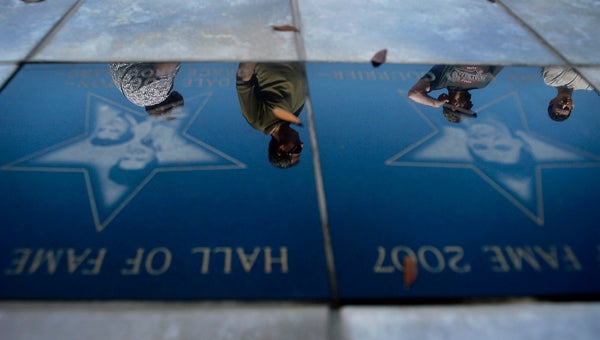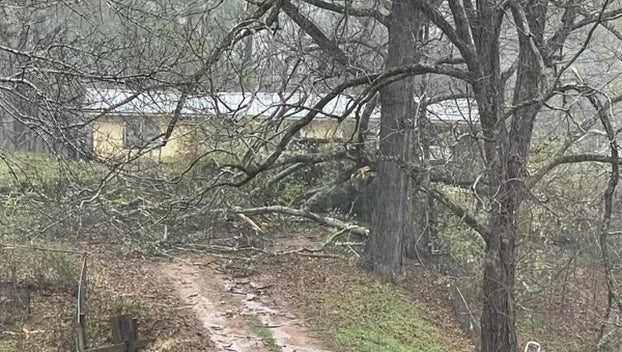Mississippi animal sanctuary finds new home, new Hope
Published 8:23 am Sunday, May 20, 2018
CARROLLTON, Miss. (AP) — Hidden among the trees, along a quiet bend on County Road 241 in eastern Carroll County, Hope Animal Sanctuary has been providing homes to abused, abandoned, neglected and relinquished animals for 25 years.
Now, the sanctuary has a shiny new facility just across the road from its original location. A grand opening on Saturday celebrated new life for the facility that places nearly 700 dogs and cats per year in permanent homes.
But before they are matched with their “forever home,” these animals live at Hope for a while, getting needed medical care, learning to socialize in many cases, being spayed and neutered and, for some, experiencing loving care for the first time in their lives.
Sisters Debbie Clark and Sharon Stone are the operations director and operations manager of this haven for animals, financially and spiritually supported by the San Rafael, California, animal rights group In Defense of Animals (IDA).
In Defense of Animals and Hope Animal Sanctuary are financed 100 percent by donations from individuals and organization in support of animals the world over. The organization campaigns for animal protection, working for dolphins, elephants and all manner of animals, and operates just three sanctuaries: one in India; one, a refuge for orphaned chimpanzees, in Cameroon, Africa; and one in the U.S., just up the road from Greenwood.
Clark is a former director of the Leflore County Humane Society, and Stone spent some 20 years working in rescue and transport for Leflore, picking up and moving animals in need of homes.
Doll Stanley, a Carrollton animal rights activist, started working with IDA on the Carroll County property in the 1990s and brought both Clark and Stone over to Hope to help carry on her work.
“The old facility was built on an as-needed basis,” Stone said. Small buildings and animal pens were initially meant to serve as housing for animals on an emergency basis, but the need was great.
“There are always more animals in need of a place than we have room for,” Clark said.
A few horses and pigs found respite at Hope and are still there, but the bulk of animals were dogs, some of them starving to death and homeless, some mistreated, some unwanted and all in need of care.
With its new facility, Hope will be able to house 100 dogs and cats — mainly dogs — and about one-fourth of those will be permanent residents because of age, physical conditions or socialization issues that render them largely unadoptable.
The others will stay at Hope, get rested and fed, and grow accustomed to human care before they are shipped out to new, carefully vetted homes, most of them in the northeastern United States.
This month, Clark, Stone and their full-time staff of four animal caregivers are celebrating their new digs and the potential for the next 25 years.
“The old place was falling apart,” Clark said. “So when we called the home office and let them know the extent of repairs we needed, we determined it would be just as expensive to do the repairs as it would be to build a new facility.”
IDA already owned the land across the road, and standing on it was an old barn.
The barn has been transformed into the operations center of the sanctuary with an open central atrium letting in light from both ends; a towering, slatted wood ceiling; and painted concrete floors.
On either side are office spaces, a staff break room and kitchen, an education room to bring in groups to learn more about animal care and animal rights issues, an isolation room for dogs with contagious conditions such as parvo or kennel cough, an animal washing station and medical care room, and a bathroom complete with a shower for the staff.
Surrounding the central operations center, along a horseshoe-shaped gravel driveway, stand a series of 20 “tiny houses,” each designed to hold up to four animals in comfort.
Each house has a window unit that provides air conditioning in the hottest months and heat during the coldest time of winter. Each has inside beds for the animals housed there, and a doggie door on the back leading outside to a spacious, grassy yard in which to run and play.
In one of the houses, a group of four aging Pekingese dogs have made a home.
“They were backyard breeders,” Clark said. They enjoyed little human contact and served mainly to deliver multiple litters of puppies over the years their owner kept them. When he got sick and died, they came to Hope.
“All of them are heartworm-positive,” Clark said. “And they hardly have any teeth. All of them had advanced gum disease.”
Next door to them is a large Great Dane mix, his scarred muzzle and brows camouflaged by a big smile.
“When he came here, he was so emaciated his bones were sticking out, and his mange was so bad he bled when you touched him,” Clark said. “I tease him now and tell him he’s getting fat.”
The stories are endless and harrowing.
Stone is currently fostering a hound she rescued one night when a woman called to say a stray was hanging around her house and he had some kind of metal trap on his head.
Stone drove to another county to pick up the animal and found his head completely encased in a tripped beaver trap. She took him immediately to Dr. Dan Hill, the veterinarian in Winona on call for Hope.
“He was able to release him from the trap,” Stone said. “Behind one ear was a big, gaping hole where the trap had ripped through his skin.”
“He’s doing really well now,” Stone said, “but we need to keep him in a kennel a while to make sure he doesn’t get infected. He eats good, he feels good and he has the greatest hound howl.”
As beloved as the animals at the sanctuary are, equally beloved are those that become pets of animal lovers that support Hope and IDA.
Just behind the new operations building, a simple pergola with a brick floor and two rows of benches stands in honor of animals that have passed. The benches are adorned with plaques memorializing those pets, and the bricks are inscribed as well.
A Rainbow Bridge wall is being created inside, with large photographs of well-loved animals that have died.
A slow-moving black dog with a thick coat walks cautiously near the pergola, searching out a shady spot.
“That’s Alice. She’s one of our grazers,” Clark said. “We have three: Alice, Ruby and Chester Man.” These dogs, which prefer a minimum of human contact and don’t like to be contained, are left free to graze and roam while their counterparts, in their tiny houses, are being prepared to live side by side with new humans who will become their companions.
“Our goal here is not just for them to live,” Clark said, “but for them to live exceptionally well, for as long as they are with us.”
To learn more about or make a donation to In Defense of Animals’ Hope Animal Sanctuary, call 237-4616, email sharon@idausa.org or visit www.idausa.org and click on “sanctuaries.”






